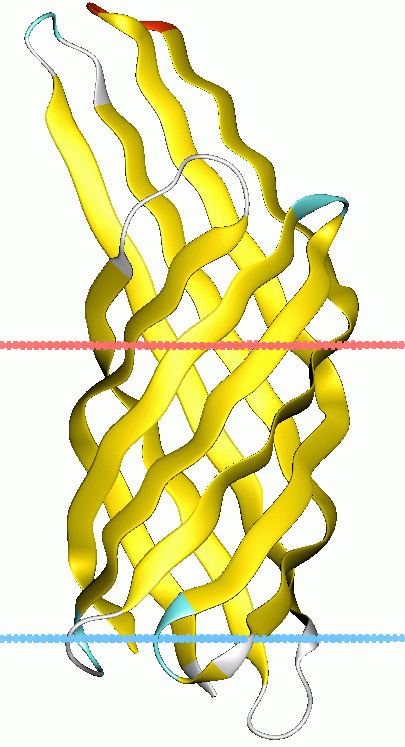Symbol Ail_Lom InterPro IPR000758 SCOP 1qj9 | Pfam PF06316 PROSITE PDOC00582 SUPERFAMILY 1qj9 | |
 | ||
Virulence-related outer membrane proteins are expressed in Gram-negative bacteria and are essential to bacterial survival within macrophages and for eukaryotic cell invasion.
Contents
This family consists of several bacterial and phage Ail/Lom-like proteins. The Yersinia enterocolitica Ail protein is a known virulence factor. Proteins in this family are predicted to consist of eight transmembrane beta-sheets and four cell surface-exposed loops. It is thought that Ail directly promotes invasion and loop 2 contains an active site, perhaps a receptor-binding domain. The phage protein Lom is expressed during lysogeny, and encode host-cell envelope proteins. Lom is found in the bacterial outer membrane, and is homologous to virulence proteins of two other enterobacterial genera. It has been suggested that lysogeny may generally have a role in bacterial survival in animal hosts, and perhaps in pathogenesis.
Borrelia burgdorferi outer surface proteins play role in persistence within ticks (OspA, OspB, OspD), mammalian host transmission (OspC, BBA64), host cell adhesion (OspF, BBK32, DbpA, DbpB), and in evasion of the host immune system (VlsE). OspC trigger innate immune system via signaling through TLR1, TLR2 and TLR6 receptors.
Examples
Members of this group include:
Structure
The crystal structure of OmpX from E. coli reveals that OmpX consists of an eight-stranded antiparallel all-next-neighbour beta barrel. The structure shows two girdles of aromatic amino acid residues and a ribbon of nonpolar residues that attach to the membrane interior. The core of the barrel consists of an extended hydrogen bonding network of highly conserved residues. OmpX thus resembles an inverse micelle. The OmpX structure shows that the membrane-spanning part of the protein is much better conserved than the extracellular loops. Moreover, these loops form a protruding beta sheet, the edge of which presumably binds to external proteins. It is suggested that this type of binding promotes cell adhesion and invasion and helps defend against the complement system. Although OmpX has the same beta-sheet topology as the structurally related outer membrane protein A (OmpA) InterPro: IPR000498, their barrels differ with respect to the shear numbers and internal hydrogen-bonding networks.
OspA from Borrelia burgdorferi is an unusual outer surface protein, it has two globular domains which are connected with a single-layer β-sheet. This protein is highly soluble, contains a large number of Lys and Glu residues. These high entropy residues may disfavor crystal packing.
